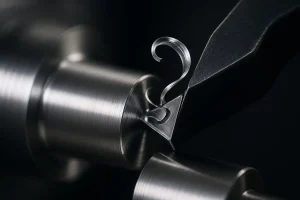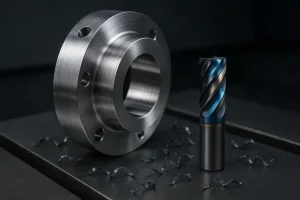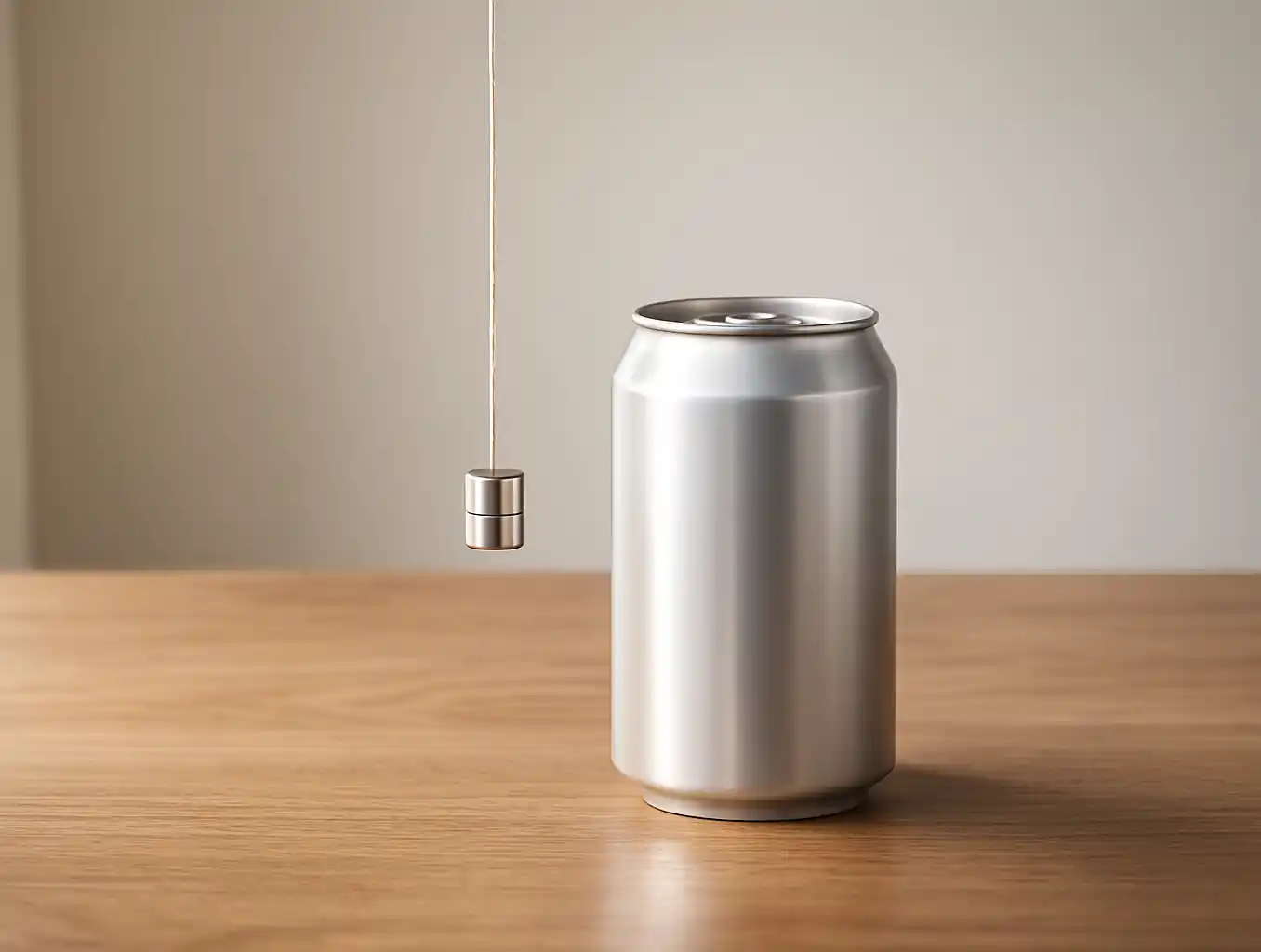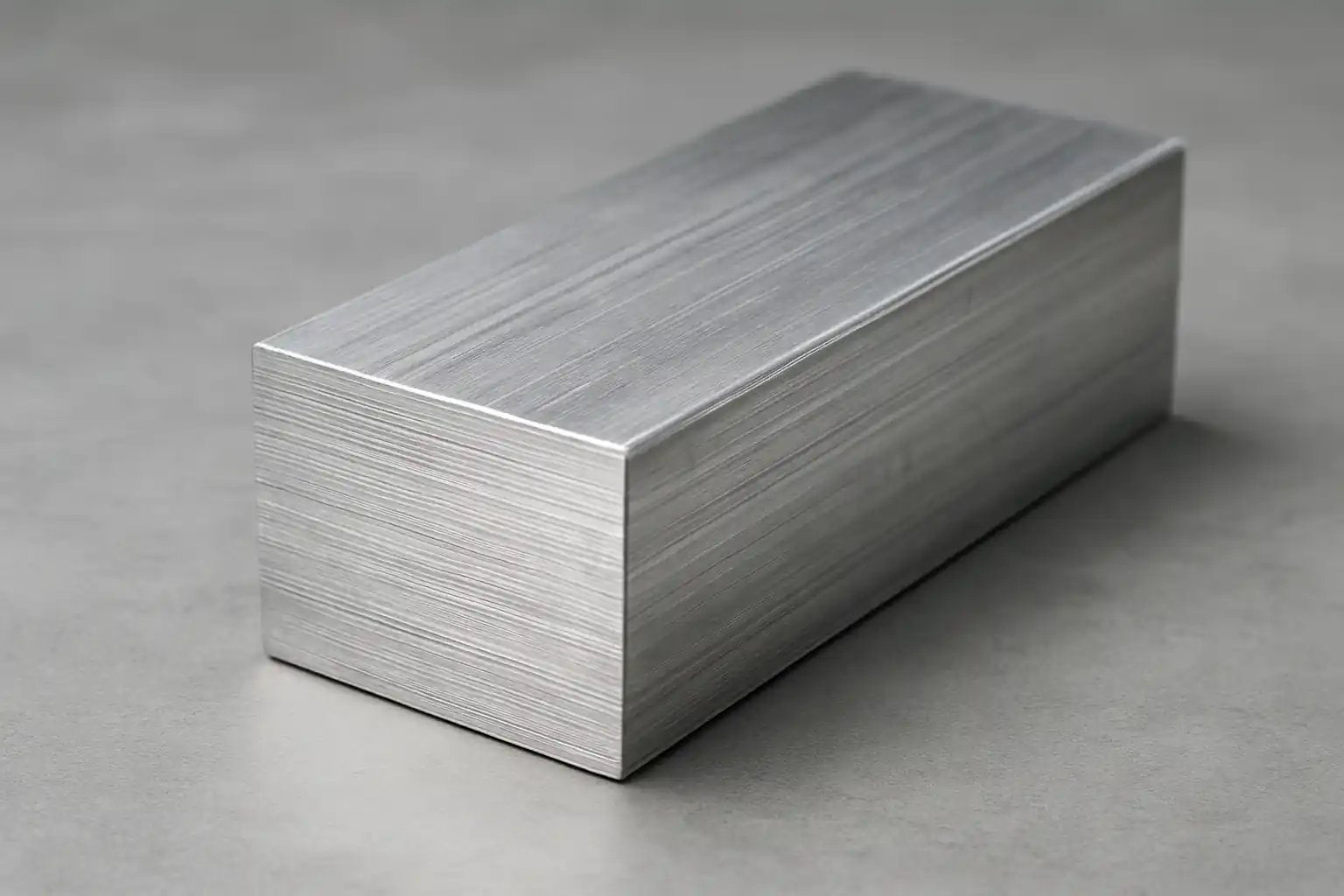Stainless steel—a material found everywhere from kitchen sinks to rocket ships—is celebrated for its remarkable durability and corrosion resistance. Yet, in the machine shop, it’s known as one of the most challenging materials to work with. Machining stainless steel is far from easy, but it is precisely this difficulty that showcases the true value of precision manufacturing. This article will explain the unique challenges of working with stainless steel and share the expert techniques required to transform this stubborn material into a perfect component.

Stainless Steel Types: Properties and Applications
| Stainless Steel Type | Grade | Key Properties | Machining Characteristics | Typical Applications |
| Austenitic | 304 | Excellent corrosion resistance, good toughness, non-magnetic; most widely used universal grade. | Severe work hardening and prone to galling; requires precise cutting parameters and tooling. | Kitchenware, food processing equipment, medical devices, chemical equipment. |
| 316 | Superior corrosion resistance to 304, especially in chloride and acidic environments; contains molybdenum. | Work hardening tendency is even more severe than 304, requiring specialized tools and coolant. | Marine engineering, pharmaceutical equipment, chemical tanks, coastal architecture. | |
| 303 | Excellent machinability due to added sulfur, which makes chips break easily. | Easiest to machine, prevents chip adhesion, making it the top choice for high-efficiency machining. | Bolts, nuts, valve parts, and precision machined components. | |
| Martensitic | 410, 420, 440C | Can be hardened by heat treatment to achieve very high strength and hardness; good wear resistance; magnetic. | Poor machinability; requires high cutting forces and causes rapid tool wear. | Knives, bearings, surgical instruments, high-hardness transmission components. |
| Ferritic | 430, 444 | Good corrosion resistance and thermal conductivity; magnetic. | Moderate machinability, but is brittle and not suitable for deep holes or complex shapes. | Automotive exhaust systems, gas cooktops, kitchen utensils, home appliances. |
| Duplex | 2205, 2507 | High strength and superior corrosion resistance; a mix of austenitic and ferritic properties. | Extremely difficult to machine; requires huge cutting forces and generates significant heat. | Marine engineering, oil and gas industry, chemical containers, high-pressure pipes. |
The Challenges of Machining Stainless Steel
To successfully machine stainless steel, you must first understand the four key properties that make it such a formidable material. These are the core disadvantages that demand specialized techniques and expertise.
1. Severe Work Hardening
One of stainless steel’s most unique properties is its high tendency to work harden. As a cutting tool begins to work the material, the stainless steel’s crystal structure changes, making the surface even harder than the material below. If the cutting parameters aren’t perfect, the tool will grind against this hardened surface, leading to rapid wear and premature failure.
2. High Toughness and Chip Adhesion
Stainless steel is exceptionally tough. When cut, it produces long, continuous chips that are prone to sticking to the cutting tool’s edge, a phenomenon known as chip adhesion. This buildup of material can degrade the cutting action, leading to a poor surface finish and dimensional inaccuracy in the final part.
3. Poor Thermal Conductivity
Unlike other metals, stainless steel is a poor conductor of heat. The immense heat generated during high-speed cutting remains concentrated on the cutting tool and the immediate workpiece area. This intense localized heat softens the tool, significantly shortening its lifespan and making it a primary cause of tool failure.
4. High Cutting Forces
The material’s strength and toughness require a considerable amount of force to cut. This places high demands on both the power and the rigidity of the CNC machine and the tooling itself. Choosing the right machinery and robust tools is a prerequisite for achieving success.
Material Grades and Machinability
Not all stainless steels are created equal, especially when it comes to machining. The machinability of a material—how easily it can be cut—is a critical factor in material selection.
When comparing two of the most common grades, 303 and 304, the differences in machinability are significant.
303 Stainless Steel is the clear winner for machining. Its composition includes sulfur, which makes its chips short and brittle, preventing them from adhering to the tool. This makes it a top choice when ease of machining is the primary goal.
304 Stainless Steel, on the other hand, is known for its excellent corrosion resistance and versatility, but it is much more prone to work hardening and chip adhesion. Machining 304 requires a more careful approach to achieve a quality result.
There is no single “best” steel. The right choice depends entirely on the application’s needs. For projects that demand high-speed processing and efficiency, 303 is often the better option. For those that require superior durability and corrosion resistance, the challenge of machining 304 is a necessary one.
Machining Process and Best Practices
Mastering stainless steel machining requires a blend of advanced knowledge and specialized techniques. By following an optimized process flow and leveraging best practices, the most challenging materials can be transformed into perfect parts.
The Machining Process Flow
A typical project follows a precise, multi-step process to ensure quality and efficiency:
- Material Preparation: Sourcing the correct grade of stainless steel and cutting the raw stock to a size suitable for the machine.
- Fixture Setup: Designing and setting up a robust fixture to securely hold the workpiece and prevent vibration during cutting.
- Rough Machining: Using aggressive cutting parameters with operations like milling, turning, and drilling to remove the majority of the material quickly, leaving a small amount for the finishing pass.
- Heat Treatment (if required): For some complex parts, a stress-relieving heat treatment may be performed between rough and finish machining to ensure dimensional stability.
- Finishing Machining: Using fine cutting parameters and sharp tools to achieve the final dimensions and desired surface finish through processes like finish milling, fine turning, and precision grinding.
- Quality Control: Thoroughly inspecting the finished part with precision measurement tools to ensure all tolerances are met.
- Post-Machining Treatments: Applying a final surface treatment such as passivation or polishing to enhance corrosion resistance and appearance.

Best Practices for Success
To effectively overcome the unique challenges of stainless steel, a thoughtful strategy is essential.

Machining Tools: Selection and Performance
When working with a demanding material like stainless steel, choosing the right tools is the foundation for success. The right tool directly determines cutting efficiency, surface quality, and tool life.
-
Tool Material Due to stainless steel’s high strength and heat generation, carbide tools are the standard choice. They offer excellent hardness and wear resistance, maintaining their cutting performance even at high temperatures. High-Speed Steel (HSS) tools may be used for certain applications but are generally limited to low-speed or intermittent cutting.
-
Tool Geometry To combat the adhesion and work-hardening tendencies of stainless steel, tool design is critical. We use tools with a large rake angle and a sharp cutting edge to reduce cutting forces and chip deformation. This ensures the tool “cuts into” rather than “pushes” the material, effectively preventing work hardening.
-
Tool Coating Modern tools use high-performance coatings to improve performance. Aluminum Titanium Nitride (AlTiN) and Titanium Carbonitride (TiCN) are common choices. These coatings significantly reduce friction and heat during cutting, improving the tool’s wear resistance and heat tolerance.
- Cutting Parameters: Control cutting speed and feed rate to minimize work hardening and manage heat. Using a large feed rate is key to ensuring the tool cuts into fresh, unhardened material.
- Coolant Strategy: A powerful and well-directed stream of coolant is essential. It not only dissipates heat but also lubricates the cutting area, extending tool life and improving surface finish.
Key Applications
The value of mastering stainless steel machining is demonstrated in the industries that rely on its unique properties.
- Medical Devices: Precision-machined stainless steel is used in surgical tools and implants due to its biocompatibility and hygiene.
- Food Processing: Its resistance to corrosion makes it the ideal material for food containers and processing equipment.
- Aerospace & Automotive: Its strength and durability make it a critical material for structural components in demanding environments.
Machining Cost: Key Factors
The cost of stainless steel machining is not a simple number; it is influenced by several critical factors. Understanding these elements can help you better plan your project budget and ensure you receive a cost-effective solution.
-
Material Grade and Machinability A material’s machinability is the primary cost driver. For instance, the easily-machined 303 stainless steel has a lower processing cost than the more difficult 304 or 316 grades, due to higher efficiency and reduced tool wear.
-
Part Complexity and Tolerance Requirements The more complex a part’s geometry and the more machining steps it requires, the higher the cost. Similarly, tight tolerances and high surface finish requirements demand more precise equipment, longer machining times, and stricter quality control, all of which directly affect the final price.
-
Production Volume Economies of scale are a significant factor in stainless steel machining. Large-volume orders allow for optimized programming, custom fixtures, and reduced tool change frequency, which significantly lowers the cost per part. Small batches or one-off parts, by contrast, have a higher relative cost.
-
Post-Machining Treatments Many stainless steel parts require additional surface treatments, such as passivation to enhance corrosion resistance or polishing for a specific aesthetic. These extra steps add to the final cost.
Why Choose Us?
In the field of stainless steel precision machining, expertise and experience are paramount. We are not just a manufacturer; we are your trusted partner. We deeply understand every challenge in stainless steel processing and have the capability to turn those challenges into perfect solutions.
- Professional Equipment and TechnologyWe are equipped with high-rigidity, high-precision CNC machining centers that are built to handle stainless steel’s high strength and cutting forces. We continually invest in the most advanced tooling and cooling systems to ensure maximum precision and efficiency, even during high-speed cutting.
- Extensive Industry ExperienceOur team has years of experience in stainless steel processing, having provided solutions for demanding industries like medical, aerospace, and food processing. Whether it’s tackling the complex work hardening of 304 stainless steel or machining a high-precision 303 component, our vast practical experience guarantees reliable results.
- Strict Quality Control SystemWe know that quality is the lifeline of our products. From sourcing raw materials to the final inspection of finished goods, we implement a strict quality control process to ensure every stainless steel part meets your most demanding tolerance requirements.
Choosing us means choosing professionalism, reliability, and guaranteed quality.
Conclusion
Successfully machining stainless steel is a testament to an engineering company’s skill and expertise. By understanding and overcoming the material’s inherent challenges, we turn a difficult process into an art form.
If you have a stainless steel project, regardless of the material’s complexity, our team has the knowledge and tools to deliver a perfect solution. Contact us today to begin your next project.



